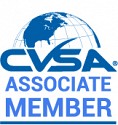Transport Canada Releases Covid-19 Guidelines for Fleets and Drivers
OTTAWA, ON (from trucknews.com) – Transport Canada has unveiled a series of recommendations to help commercial vehicle operators prevent the spread of Covid-19 – including a focus on proper handwashing techniques, social distancing, and detailed steps to clean vehicles before and after a trip.
The recommendations emerge in an April 1 document called Federal Safety Guidance to Protect Drivers and Limit the Spread of Covid-19 in Commercial Vehicle Operations.
Fleet managers are encouraged to minimize the number of vehicles shared by employees; ensure drivers have appropriate disinfectants, hand sanitizer, personal protective equipment (PPE), and other material to clean high-touch surfaces in trucks; and implement other guidelines found in the document.
“Commercial vehicle drivers should take precautions such as covering their hands when pumping [fuel], touching the service station door handles, or handling any automotive products that may be required when performing vehicle maintenance, such as filling windshield washer fluid and adding motor oil, if this is possible,” the document adds. If that isn’t possible, they are told to wash their hands or apply hand sanitizer immediately after the task is done.
Regular Vehicle Cleaning
For the regular cleaning of equipment, drivers should be supplied with personal protective equipment, disposable cloths, paper towels and absorbent material, waste disposal bags and tape, cleaning agents, and disinfectants, the briefing notes.
High-touch surfaces to be regularly cleaned include: keys or fobs; starter buttons; door handles; grab handles, pads and armrests; steering wheels; shift levers and consoles; dashboards; power windows and power door lock switches; radio and climate control buttons; turn signals and wiper stalks; seats and seat adjusters; and touch screens. Also included in the list is any other commonly touched part such as a glove compartment, hood, pickup tailgate handle, and sleeper.
When cleaning vehicle interiors:
~ Put on disposable waterproof gloves, and avoid touching your face. Direct contact with contaminated areas should be avoided.
~ Use a hard-surface disinfectant approved for use against Covid-19, following recommended dilution rates, contact times, and conditions specific to the surface.
~ Avoid bleach, except on simple plastics, and don’t use solvents.
~ Wipe off what you wipe on. Don’t leave chemicals to linger.
Soiled cleaning cloths, disinfection cloths, and disposable gloves should be discarded in a waste disposal bag. Then it’s a matter of washing hands using recommended techniques.
Federally regulated carriers are also encouraged to ensure Hazard Prevention Programs address Covid-19. This would mean developing measures with Workplace Health and Safety Committees or representatives.
Watching Health and Personal Hygiene
Drivers, meanwhile, are told to monitor themselves for signs of the virus and self-isolate if symptoms like a mild cough or low-grade fever emerge.
Since the coronavirus seems to survive on hard surfaces for one day or longer, washing hands is stressed as being particularly important. Hand washing with plain soap and warm water for 20 seconds, and then drying with paper towels, is preferred. But an alcohol-based hand sanitizer with an alcohol concentration of 60-90 percent is seen as a temporary option. Concentrations above 70 percent are preferred.
But the sanitizers may not be effective if there is organic material on the hands, such as after using the toilet, the briefing adds. Wipes should first be used to remove any soil, followed by the sanitizer.
It’s important to avoid touching eyes, nose or mouth with unwashed hands at any time.
Any cough or sneeze should also be directed into a tissue or bend in the arm, while the tissues should be discarded in a lined waste basket as soon as possible, washing and sanitizing hands for 20 seconds after that, the briefing says.
Face-to-face meetings should also be minimized to support social distancing.
If that isn’t possible, it’s a matter of keeping at least six feet if possible from other people and avoiding physical contact such as handshakes.
“This includes contact with customers, receiving personnel and those at rest stops,” Transport Canada says.
Covid-19 Resources
The following are suggested as additional resources in the fight against Covid-19:
World Health Organization: Getting your Workplace Ready for Covid:19
Canada’s Covid-19 Economic Response Plan
https://www.canada.ca/en/department-finance/economic-response-plan.html
Government of Canada: Resources for Canadian Businesses
Government of Canada: Risk-Informed Decision-Making Guidelines
Trucking HR Canada: Covid-19 Resource Guide for Trucking and Logistics
https://truckinghr.com/wp-content/uploads/2020/03/Covid19_Resourceguidev3d.pdf
Preventing Covid-19 in the Workplace
Mental Health Commission of Canada: Choosing Information Sources For Mental Well-Being







